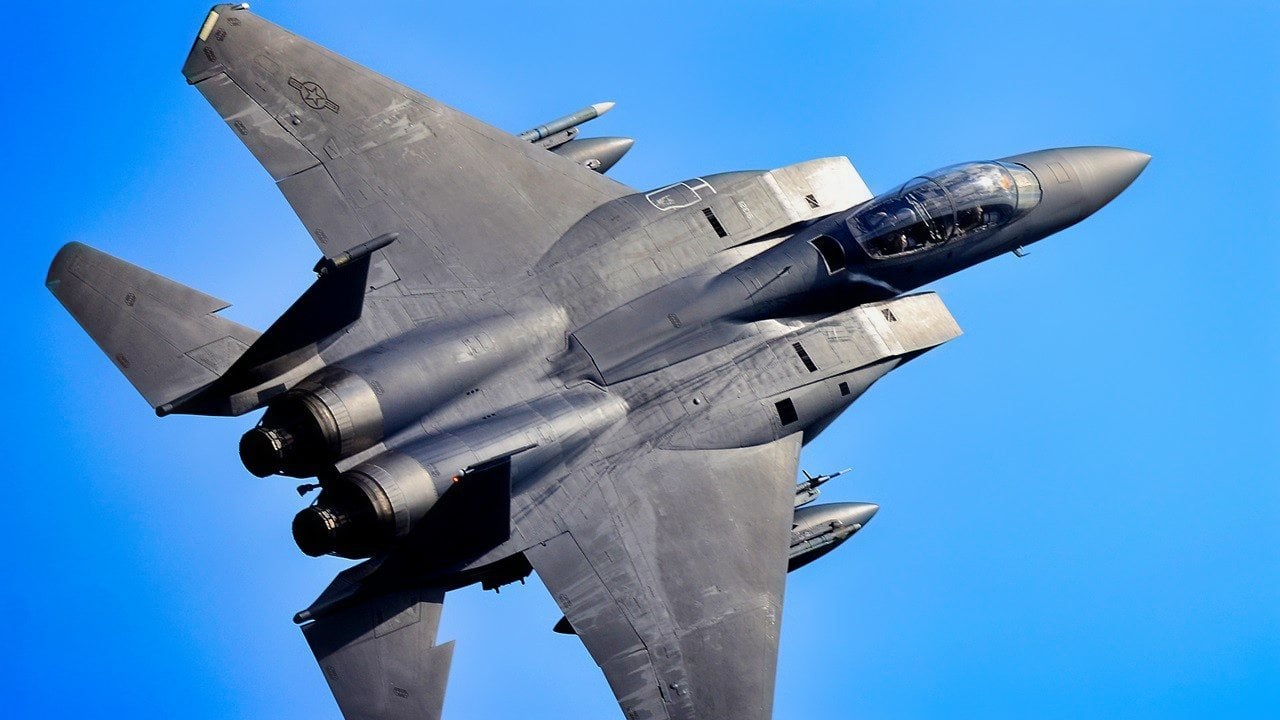Not F-22 or F-35: F-15E Strike Eagle Is Fastest U.S. Air Force Airplane
Summary and Key Points You Need to Know: The fastest aircraft in the U.S. Air Force, apart from the Space Force’s X-37B, is the F-15E Strike Eagle, which can reach speeds of MACH 2.4 to 2.5, approximately 1,875 miles per hour.
-Powered by Pratt & Whitney F100-PW-220 or 229 engines, the F-15E excels in speed, maneuverability, and combat performance.
-With a history of successful missions since its debut in 1986, the F-15E is set to be replaced by the F-15EX, which will feature advanced technology and the capability to launch hypersonic weapons.
Meet the F-15E: The Fastest Jet in the U.S. Air Force’s Arsenal
Hazard a guess on which airplane is the fastest in the U.S. Air Force? No, it’s not the F-35 or F-22.
The fastest aircraft, if you don’t count the Space Force’s X-37B spacecraft that can fly at speeds between MACH 16 and MACH 25, is the F-15E Strike Eagle. The F-15E can hit between MACH 2.4 and 2.5 or about 1,875 miles per hour.
By comparison, the F-35’s top speed is MACH 1.6 and the F-22’s is a tad slower than the F-15E at MACH 2.2.
What Is the Fastest Airplane in the U.S. Air Force? Meet the F-15E
What makes the F-15E reach such speeds? Start with the engines. The F-15E is propelled by two Pratt & Whitney F100-PW-220 or 229 after-burning turbofan engines. These have advanced digital technology to enable MACH 2.4 to 2.5. With these sophisticated engines, pilots can go from idle power to maximum afterburner in under four seconds. This allows for high performance and maneuverability – qualities that fighter pilots prefer.
These engines put out 50,000 pounds of thrust or 25,000 pounds from each F100-PW-220 engine. That is a 40 percent increase over the previous engine control system. The F100-PW-229 engines provide 58,000 pounds of thrust or 29,000 pounds from each. The engines enable a range of 2,762 miles with external fuel tanks plus a ceiling of 60,000 feet.
This engine thrust exceeds the airplane’s loaded weight for a high thrust-to-weight ratio. This along with low-wing loading (the ratio of an airplane’s weight to its wing area) allows the aircraft to turn rapidly without losing its speed.
Excellent Combat Record
The F-15E’s predecessor, the F-15 Eagle, had a remarkable air combat record of 104 wins and zero losses. The idea behind the F-15E Strike Eagle was to build on this combat experience and add a better ground attack mode to the airframe for deep strike missions. The deep strike capability is the role it played in Operation Desert Storm when it killed 18 Iraqi jets on the ground. The F-15E was then deployed during Operations Southern and Northern Watch. The F-15E was also utilized during the War in Afghanistan and Iraq.

More Specs for the F-15E
The F-15E made its first flight in 1986. The F-15E can maintain nine Gs during complex maneuvers. It flies competently in all weather and at night. The F-15E can field radar-homing and infrared-guided air-to-air missiles. It can even drop the B61-12 nuclear weapon. The fighter is also armed with one 20mm M61A1 Vulcan 6-barrel rotary cannon. The F-15E can carry a munitions load of 24,500 pounds.
What Is a “Wizzo?”
Two heads are better than one in the Strike Eagle as the pilot flies in front of the back-seat Weapons Systems Officer or “Wizzo.” This means the pilot can focus on attaining those high speeds and difficult turns, climbs, and dives. The WSO can coordinate with the ground or in-air command and control to set up targeting and enable the airplane to launch its weapons.
The F-15EX Will Burst On to the Scene
The F-15EX will replace the F-15E Strike Eagle and the EX variant will also be able to attain those amazing speeds. It will fly behind the F-35 in combat missions as the stealthy Lightning II will be able to degrade air defenses for a follow-on F-15EX ground attack. The F-15EX will have better sensors, radars, and an advanced battle management system than the F-15E. It will also be able to launch hypersonic weapons.
Amazingly, the F-15E that came into service toward the end of the Cold War still has the speed and maneuverability to make a pilot’s mouth water. When it comes to specs, fighter pilots love performance, and the Strike Eagle does not disappoint. Those high-thrusting engines make it the fastest airplane in the U.S. Air Force – just slightly faster than the F-22.
About the Author, Brent M. Eastwood
Dr. Brent M. Eastwood is the author of Humans, Machines, and Data: Future Trends in Warfare. He is an Emerging Threats expert and former U.S. Army Infantry officer. You can follow him on Twitter @BMEastwood. He holds a Ph.D. in Political Science and Foreign Policy/ International Relations.
All images are Creative Commons and Shutterstock.


